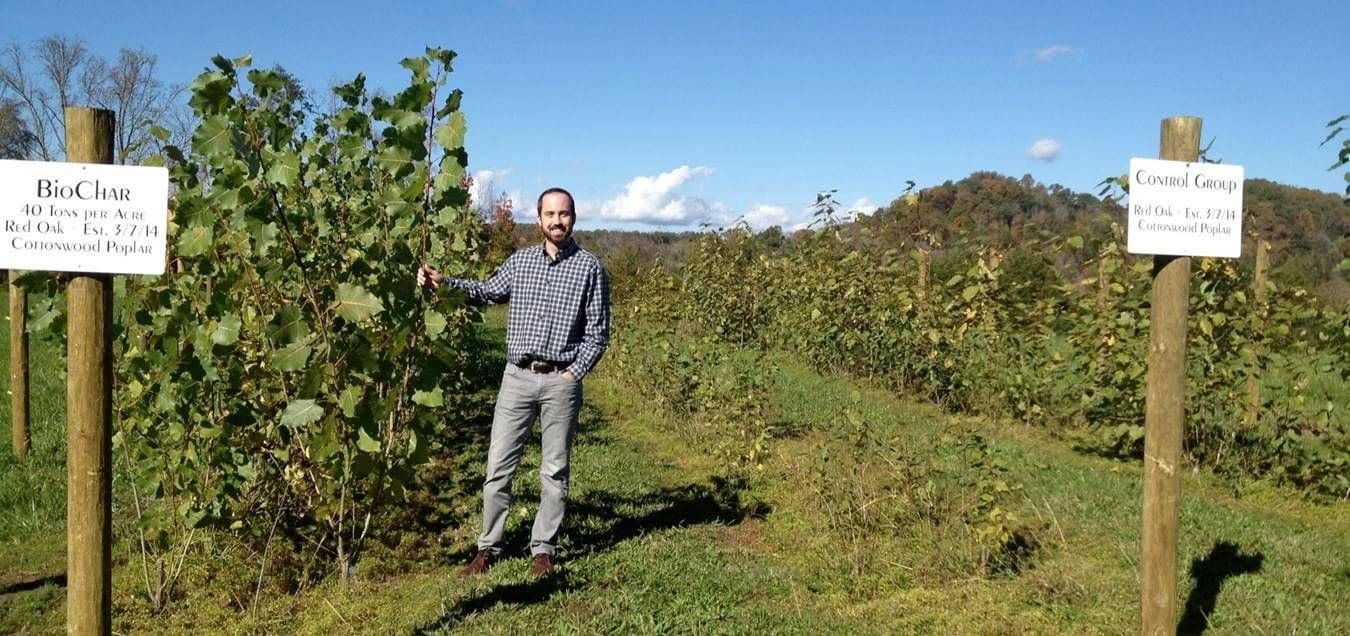Miscanthus – Renewable Diesel, the Biochar

Information Article #12 touched extremely briefly on the co-products that are generated when Renewable Diesel Fuel (RDF) is made from Miscanthus. They had to be mentioned but no details were given because of lack of space when covering the general concept about RDF plants. The first of these co-products is biochar which is the subject of this information article.
Biochar that is produced by such RDF facilities is not routine biochar. It is very high quality biochar. Miscanthus New Zealand Limited (MNZ) has a sample of this biochar that was made from Miscanthus in the USA and we will shortly be using some of it as part of a research investigation. We will report on the results in due course.
As well as being permanently sequestered carbon, biochar is in general an extremely useful material. It has a very positive reputation for significantly enhancing plant growth when incorporated into soil. It works extremely well for everything from golf course turf enhancement and vegetable production, to even include boosting tree growth. Biochar is becoming well known through the activities of the International Biochar Initiative and others. It has even been acknowledged at a United Nations climate change conference as being an important part of climate change mitigation. But it is not yet recognised at all in the New Zealand Emissions Trading Scheme.
But the biochar that is produced by the RDF process is inherently much higher quality than most biochar. This is partly because it is made at a considerably higher temperature. Independent analysis in the USA has shown that the biochar that is produced from the RDF process is already well into the category of being activated carbon, with a figure of 650 m² per gram. As a result it has an inherently higher value than most biochar. It also has a much wider range of markets. This higher quality RDF biochar has also been shown to have a significant content of graphene. This raises the value still further and widens the existing and potential markets even more.

The prospect of growing Miscanthus and using it to produce graphene is very revolutionary right now but it is becoming the way of the future. The range of uses for graphene expands daily. MNZ has been reliably informed that huge market demand already exists, and for the foreseeable future – and that includes a future in which RDF plants will be common – the market demand will exceed all of the production that will be possible from those plants. So there is virtually no constraint on use of Miscanthus for supply to RDF plants because the highest value product – which alone can justify the investment – is already in such high demand.
While activated carbon can be used for things such as filtration and water purification, the RDF biochar has been shown to also be effective in a range of other uses. These include uses such as being an industrial abrasive, making bitumen more durable and water resistant, and making building materials such as concrete both lighter and stronger. There are many other high value uses but most of these have to remain confidential at present. A lot of work is currently going on in relation to post-processing of this RDF biochar to further refine the graphene content and hence further increase the value of the biochar.

It is hard to grasp the concept that Miscanthus – which is primarily used internationally as boiler fuel and primarily used in New Zealand as animal bedding – is able to be used to make products that are so much more valuable. The value that is already being realised by the RDF biochar and that can easily be realised through the use of Miscanthus in RDF plants, can effectively transform these industrial facilities. They will change from being renewable diesel plants to being high value carbon plants that happen to produce RDF as a co-product. This means that the pricing of the RDF can be very flexible with the process still returning an excellent commercial return. This must be of interest to major fuel users in New Zealand.
So please take the time to visualise a holistic scenario. Picture a dairy factory – or a meat works if you prefer – that spray irrigates its effluent onto an adjoining Miscanthus stand. When harvested, the harvested material from that stand can be used as feedstock for an RDF plant that makes a high quality replacement for fossil fuel diesel and also extremely high quality biochar with multiple markets. The diesel can be used to fuel the trucks bringing the milk or livestock to the factory. It can also be used to transport the processed product – be it milk powder, cheese, butter or meat – away to market. Some of the biochar – the poorer material in terms of graphene content and hence the lower value fraction – could be applied to the Miscanthus stand to make it grow even better than it was already doing.
In this scenario, nitrogen leaching is also being reduced; the District Council has less wastewater effluent to do deal with; and the dairy factory or meat works has a much better carbon footprint. Equally importantly, everyone involved is making money. The RDF biochar which has a very high value, and that is being made from the Miscanthus, is really the key that will enable this scenario to turn from being a nice sounding idea into a positive commercial and environmental reality. Contact MNZ to get involved!


